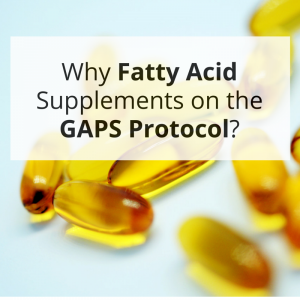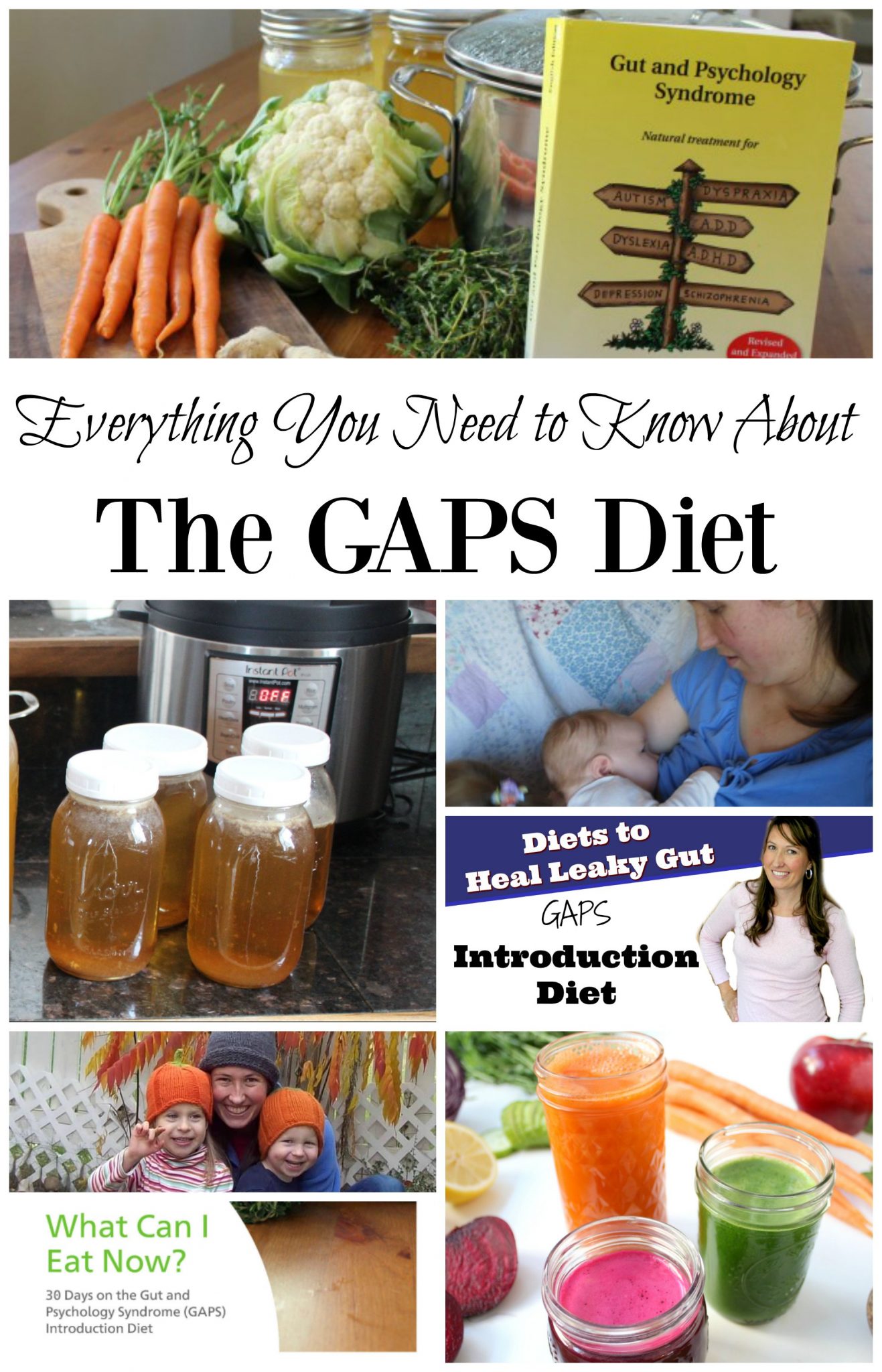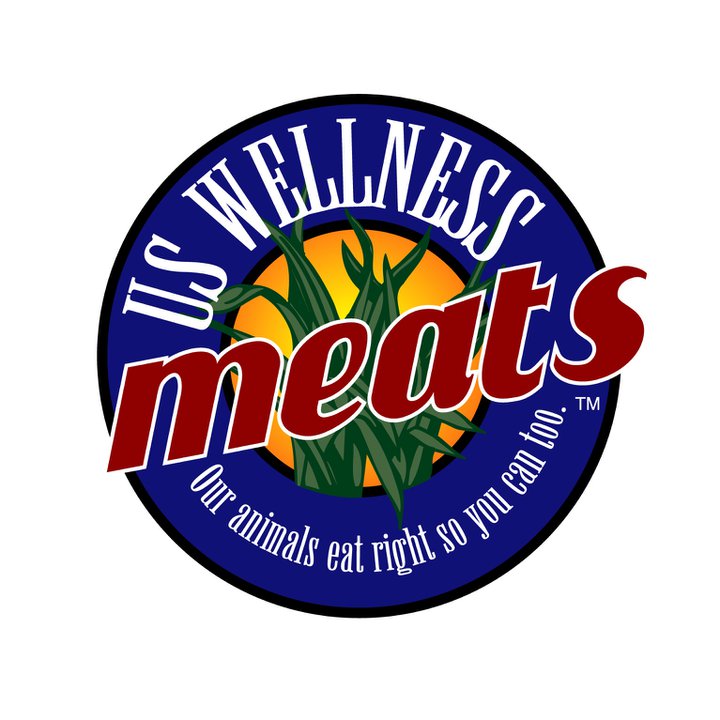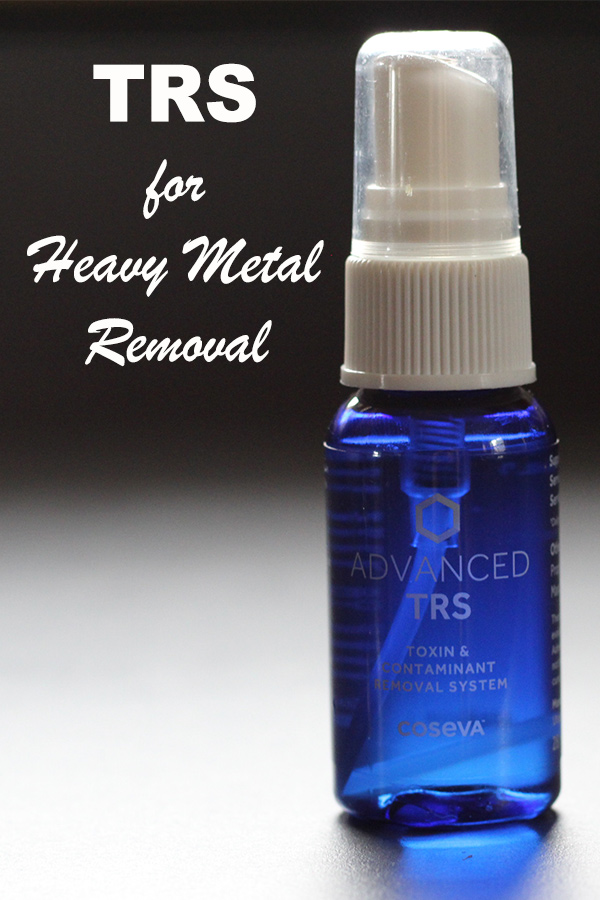
If you are familiar with the GAPS™ Protocol, you may also be familiar with the recommended supplementation program:
- A therapeutic strength probiotic
- Essential fatty acids (what we’ll talk about today)
- Real cod liver oil
- Digestive support (if needed)
- Vitamin & mineral supplements (if needed)
Note from Cara: This is a guest post by Melanie of Honest Body, she’s a GAPS mom and has a fabulous GAPS class starting later this month! If you’ve been thinking of trying the Gut and Psychology Syndrome diet (GAPS) then you’ll want to check out her class for sure! Click here to check it out, hurry, registration closes January 25th!
In the words of Dr. NCM, “let us have a good look” at fatty acids. Here is what we will cover in this article:
1. Did you know?
2. What are “fatty acids” and “essential fatty acids”?
3. Fatty acid deficiency
4. Roles of fats
5. How do they affect my brain?
6. How do I get fatty acids from food?
7. Indications for supplementing fatty acids
8. How much to supplement on the GAPS™ Protocol
9. Recommended brands
10. Final factors to consider
We’ll begin with some quick facts about fatty acids:
1. Did you know?
- Omega-3 fats come in two forms: 1. Ready-for-brain-use form, found only in fish, and 2. A cruder form, found in flaxseeds and some other seeds & nuts
- The vegetarian form of Omega-3 (ALA) has to be acted upon by enzymes, which many of us don’t have and that also decline with age
- Eating cold-water fatty fish 2 – 3 times a week, and supplementing with fish oil supplements is the most efficient way to get enough Omega-3 fatty acids, particularly the anti-inflammatory (EPA) and the brain (DHA) fatty acids
- Fish oil supplements need to be eaten with a meal that includes fat for good absorption
- Multivitamins DO NOT typically contain essential fatty acids
- The majority of Omega’s consumed in the standard American diet are Omega-6’s
- Our ancestors ate close to a 1:1 ratio of Omega-3 fatty acids to Omega-6 fatty acids
- Fats found in processed foods, heated vegetable oil, and hydrogenated fats can make the membranes of your nerve cells rigid and unresponsive
- Rigid and unresponsive cell membranes lead to malfunctioning neurons, inflammation and degeneration…and all the symptoms that go along
2. What are “fatty acids” and “essential fatty acids”?
Fatty acids are the building blocks of the fat in our bodies and in the food we eat. During digestion, the body breaks down fats into fatty acids, which can then be absorbed into the blood. Fatty acid molecules are usually joined together in groups of three, forming a molecule called a triglyceride. Triglycerides are also made in our bodies from the carbohydrates that we eat.
Fatty acids have many important functions in the body, including energy storage. If glucose (a type of sugar) isn’t available for energy, the body uses fatty acids to fuel the cells instead. Burning fat for energy is actually preferable and more sustainable for health.
Essential fatty acids means that the body cannot produce the fatty acid, it has to be consumed.
Strictly speaking, there are two essential fatty acids:
- LA – Linoleic acid (Omega-6)
- ALA – Alpha Linolenic acid (Omega-3)
But because conversion rates can be poor (especially in GAPSters), there are also conditionally essential fatty acids:
- DHA – Docosahexaenoic acid (Omega 3 that can be a derivative of ALA. The fatty acid that best serves brain health)
- EPA – Eicosapentaenoic acid (Omega 3 that can also be a derivative of ALA and a good anti-inflammatory)
- AA – Arachidonic acid (an Omega-6 fatty acid that is also good for membrane flexibility and permeability, can be derived from LA)
- GLA – Gamma linolenic acid (an Omega-6 fatty acid, the human body produces GLA from LA. Food sources are black currant seed oil, evening primrose oil, borage and hemp seed oil)
3. Fatty acid deficiency
Today healthy fatty acid deficiency is epidemic.
Deficiency leads to:
- Musculoskeletal issues
- Endocrine issues
- Cardiovascular issues
- Immune issues
- Allergies and asthma
- Depression and other mood disorders
4. Roles of fats
- Provide a source of energy (fats are the longer lasting fuel, the “logs” with carbs being the “kindling”)
- Are important in the makeup of cell membranes (as you can see in the graphic…the lipids, the cholesterol, the fatty acid tails…)
- Are necessary for healthy liver function: building healthy cholesterol and bile
- Are required for the absorption of fat soluble vitamins: A, D, E, K
- Are required for the adequate use of proteins
- Serve as a protective lining for the organs of the body
- Play a role in slowing the absorption of food for proper energy regulation
- Are imperative to managing the inflammation process
- MAKE FOOD TASTE GOOD!
5. How do they affect my brain?
Diets high in good fat support your brain function. The brain is made primarily of fatty acids, or phospholipids (the simplest form of fats). Essential fatty acids (we’ll call them EFA’s for the rest of this article) do the job of providing proper fluidity and flexibility of the neuron cell’s membrane. This provides structure and a protective wall for the neuron.
A healthy and flexible membrane allows for the correct nutrients to pass back and forth, and for the metabolic needs of the neuron to be taken care of. A healthy and flexible membrane also performs the function of good communication and synapses between neurons – critical for better brain function, mood, memory and general health.
But let’s say you eat at restaurants regularly (especially fast food), or eat store bought foods on a weekly basis, like crackers, chips, cereals, margarine, doughnuts, or any other processed foods and oils, especially with hydrogenated or partially hydrogenated fats. The damaged fatty acids within these foods replace the healthful fatty acids in your cell membranes and cause the membrane to be rigid and inflexible.
Cell to cell communication, fluidity, flexibility is hampered and neurons become less capable of their functions.
This makes for an unhappy brain.
A Special Note on DHA and EPA
DHA and EPA can be derived from vegetarian ALA (including flax and walnut) but are not converted well in many people…especially in cases of insulin resistance, so it is important to get them in their direct form via animal sources, like quality fish oil and cold water fish. Eating lots of foods with omega-6 fatty acids will also hinder the conversion of ALA to DHA and EPA.
6. How do I get fatty acids from food?
It is first important to note that traditional cultures, and our hunter gather ancestors, naturally ate a ratio of about 1:1 Omega-3’s to omega-6’s in their foods. Some estimates today say we are consuming as high as 25 times the amount of omega-6 foods to omega-3 foods. This is because of the high amounts of sunflower, cottonseed, soybean, sesame, and canola oils found in processed foods we are consuming, which lead to a very inflammatory environment in our bodies.
So to balance out the omega-6’s with “brain-healthy” and anti-inflammatory omega-3 fatty acids, we need to eat foods that are naturally high in omega-3’s.
Good food sources include cold water fish like:
- wild-caught salmon
- sardines
- herring
- mackerel
- black cod
- tuna (Wild Planet claims to not overcook their tuna and to leave omega-3’s intact)
- bluefish
- fish roe (eggs)
Grass-fed beef and pastured egg yolks are also good sources of omega-3 fatty acids, as well as fresh avocados.
There are other (vegetarian) sources of omega-3, such as walnuts and flax seed. However, many people have trouble converting these fats into DHA and EPA. And if we can’t convert, these don’t give us any benefit. If we eat a lot of crackers, cereal, bagged foods, restaurant and fast food, we will likely be getting a high ratio of omega-6’s, and eating foods that lead to conditions like insulin resistance, which make the conversion of ALA into DHA and EPA all the more difficult.
Maximizing food preparation for EFA’s
Careful! Heat is very damaging to the delicate Omega fatty acids. Heat changes the structure of these fats. If essential fatty acids are exposed to heat, light, or air for too long they start to oxidize and free radicals are formed.
For fresh fish: stick to lightly broiling and baking, keeping the inside of the fish “rare.” For tuna this is an internal temperature of 125 degrees F; for other whole fish or steaks this is 135 – 145 degrees F.
For grass-fed beef: cook medium rare (130 – 135 degrees F) to rare (120 – 125 degrees F), making sure that you are getting your beef from a trusted source.
Walnuts should be soaked or sprouted (soaking in a salt water brine and then dehydrating makes them taste like butter…so good).
Flax seeds should be kept away from heat, light, and air. Flax seed grinding is best done fresh.
Any oils should be cold pressed and kept out of heat, light and air to prevent oxidation and free radical formation.
Eat your pastured egg yolks raw! We eat them raw in the following ways:
- Russian custards (2 yolks whipped with 1 tsp honey for 2 minutes, per person)
- Homemade mayonnaise
- Raw milk ice cream
- Easy blender hollandaise over poached eggs – almost raw
- In smoothies, hidden with plain, whole-milk yogurt and fruit
7. Indications for supplementing fatty acids
Here are some indications of a fatty acid deficiency:
- Poor brain function in its many forms: depression, mood swings, bi-polar, poor memory, anxiety, etc.
- An oral pH below 7.2 – 7.4 (oral pH taken a half hour away from food or drink, except for water, a using pH strip)
- Limited consumption of fatty fish, raw nuts and seeds, uncooked cold-pressed extra virgin olive oil, or avocados
- Regular consumption of fried foods
- Painful joints and musculoskeletal issues
- Chronic pain and inflammation
- Regular consumption of processed foods with hydrogenated or partially hydrogenated fats (read your labels!)
- Dry or unhealthy skin in general
- Dandruff
- Hormonal imbalances
8. How much to supplement on the GAPS™ Protocol
As with every new supplement or food introduction, it is important to build gradually, starting with a small amount and building up to the recommended dose. Dr. Natasha recommends a combination of nut/seed oils, fish oil, & cod liver oil for a complete fatty acid profile. If you need to prioritize, I recommend high quality cod liver oil first (as it contains some Omega fats, along with vitamins A & D), then fish oil, then nut/seed oils.
Nut/Seed oil (optimally in a 2:1 ratio of Omega 3 to Omega 6):
- Under 18 months: 1 – 2 teaspoons/day
- Children: 1 – 3 tablespoons/day
- Adults: 4 – 5 tablespoons/day
Cod liver oil (see my article on cod liver oil):
- Under 18 months: 1/4 to 1/2 teaspoon/day
- Children: 1/2 to 1 teaspoon/day
- Adults: 1 teaspoon/day
Fish oil:
- Under 24 months: Up to 1 teaspoon/day
- Children: 1 – 3 teaspoons/day
- Adults: 3 – 4 teaspoons/day
9. Recommended brands
- Eskimo-3 Brainsharp – fish oil + nut/seed blend
- Vital Choice Salmon – fish oil
- Biotics Optimal EFA’s – fish oil + nut/seed blend
- Barlean’s Lignan Omega Twin Liquid – nut/seed blend
- Green Pasture’s FCLO – cod liver oil
- Corganic Extra Virgin CO – cod liver oil
10. Final factors to consider
Fat Digestion – This needs to be working in order for fats to be properly emulsified. Poor fatty acid status may be an indication for fat digestion support. See this article for fat digestion support.

This is a guest post by Melanie of Honest Body, she’s a GAPS mom and has a fabulous GAPS class starting later this month! If you’ve been thinking of trying the Gut and Psychology Syndrome diet (GAPS) then you’ll want to check out her class for sure! Click here to check it out, hurry, registration closes January 25th!
Learn how to heal leaky gut

60-page ebook of all my best GAPS Diet (Gut and Psychology Syndrome) articles all in one place.








How many capsules of the Green Pastures fclo/bo does it take to provide enough fclo for an adult? Is there a great savings in buying the gel or liquid forms separately or in combination forms?
I think you need to take like 14 capsules, it’s a huge amount. I recommend the liquid.
Thanks! Would you get the combined fclo/butter oil liquid or separate bottles? Looking to save a little money!
I did the butter oil separately when we did that.
Good to know; thanks so much!
Very interesting, thanks! Does Dr. Natasha recommend taking a combination of all three (fish oil. cod liver oil, and nut/seed oil) to get a better balance of the fatty acids that each one alone can’t provide? If you take them this way should you lower the doses of each? Hmm, the package for The Eskimo-3 Brainsharp says not to take it with CLO.
THANK YOU for clarifying this information, and especially, for breaking it down by age groups. It helps me a lot right now with our growing family!
Green Pastures has three or four fabulous sales each year — 50% off or so. sign up for their newsletters and you’ll know when they are, then buy a lot.